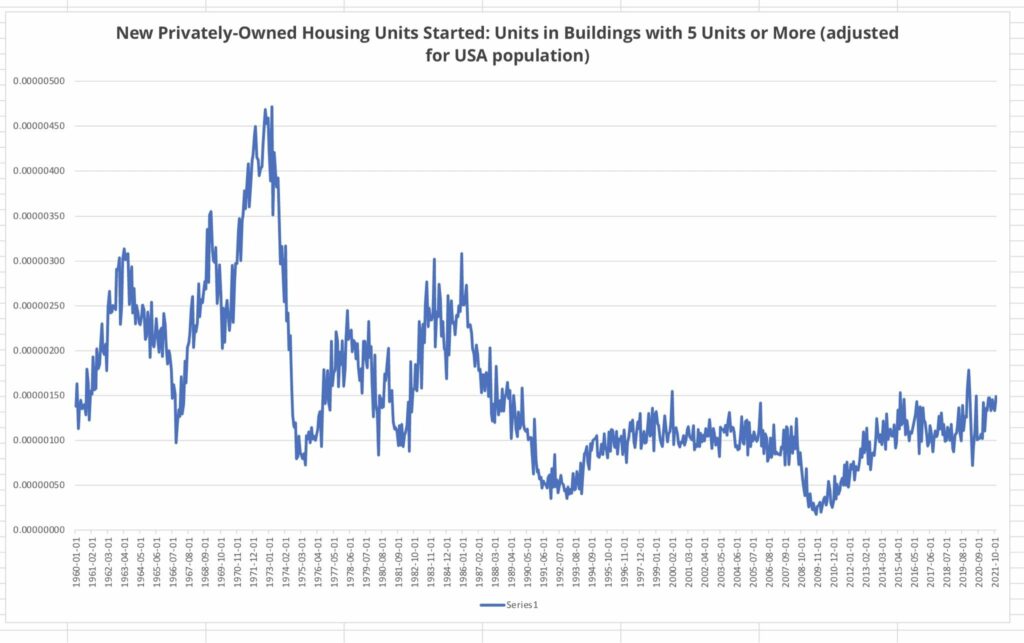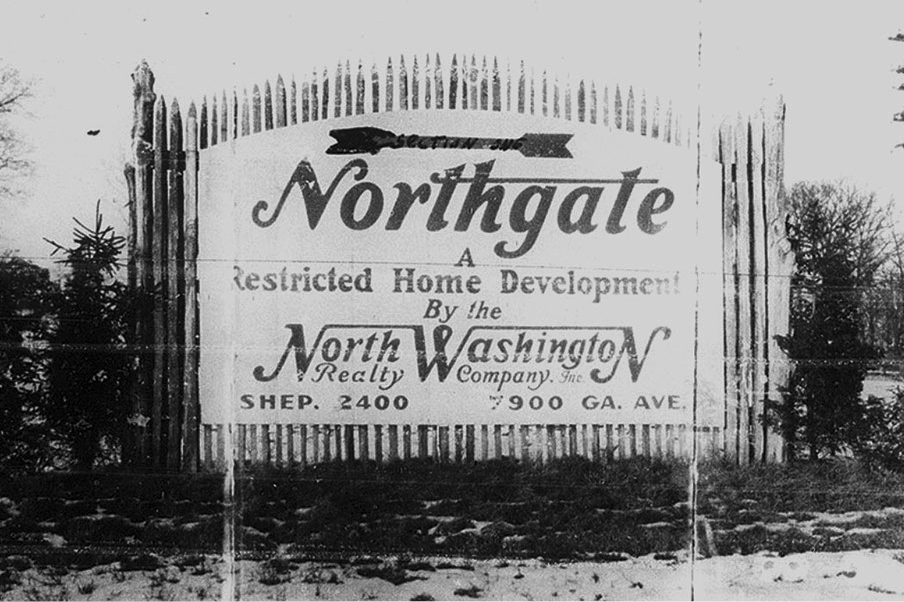The Iron Law of Supply and Demand is Indestructible.
We try our best to alter the equation but fail miserably. Low supply and high demand lead to exorbitant pricing.
Housing isn’t immune to Economics – 101.
People search for simple answers to complex problems. Our housing dilemma requires a history lesson, not a sound byte.
John Nolan, a famous Urban Planner, completed a study of the housing situation in 1914. Light-touch density was the core of his findings. Duplexes, townhouses, and three-story homes aptly named triple-deckers dominated the housing landscape a century ago.
These dwellings made it accessible and affordable for workers to build wealth through home equity.
Why did this policy change?

Source: FRED
Racism and anti-immigration sentiment are the gifts that keep on giving.
In 1916, the Supreme Court declared that race could not be part of zoning policy and that using race in zoning policy violated the Fourteenth Amendment. Planners and builders would need to find another way to keep people of color and recent immigrants out of their neighborhoods.
The solution – Single-Family Detached Housing Zones.
President Herbert Hoover created a committee that formulated a policy deploying prices to keep out the so-called undesirables.
Single-family homes were considerably more expensive than duplexes and triple-deckers. Hoover’s Committee recommended that only single-family homes should be built in new neighborhoods. Minimum lot sizes, side yards, and backyards soon followed.
The federal government pressured the states to follow the new housing policy and most complied.
By the end of the 1920s, exclusionary zoning had become dominant in 52% of urban areas, sowing the seeds for creating a supply of homes only the rich could afford in 2024.
In 1934, the FHA was created to turn SOME Americans into homeowners.
The FHA would only back mortgages in certain neighborhoods. Social and racial classes determined which neighborhoods received bank financing. White suburbs were favored over integrated neighborhoods, and the practice of redlining was born.

Purchasing a single-family detached home became more of an impossible dream for many Americans with the Not in My Backyard, NIMBY movement.
According to Batya Ungar-Sargon in her thought-provoking book Second Class:
The Nimby movement was born in San Francisco in 1956, when high-staus hotels banded together to convince the local zoning board that areas zoned for hotels must exclude lower-staus motels. Property owners realized they had a newfound power. They could attend zoning hearings, delay things, demand hearings, sue, and make their voices heard.
This movement escalated from California and reached NYC and Boston.
The answer to today’s problems goes back over a century. Due to the progression of outlawing triple-deckers and other affordable residences, we have a massive housing shortage for the middle and lower classes.
Sargon solidifies this point: The housing shortage is a direct result of zoning: 78% of the land in the U.S. that is zoned as residential land is zoned for single-family detached homes.
Compounding the current problem, average wage owners are forced to compete against highly credentialed elites for the tiny surplus of homes that reach the market.
The solution is obvious. We need more affordable multiunit residences. It won’t be easy. California passed a law in 2021 to eliminate zoning laws that require neighborhoods to have only single-family homes.
The pushback has been fierce.
My colleague Ben Carlson recently wrote an excellent post about the recent causes of our housing nightmare and the common misperceptions over who is responsible.
He came to the same conclusion. The only solution is more residential construction.

Though the answer is right before our faces, the solution is miles away.
In what neighborhoods are these affordable multi-unit homes going to be built?
Not in my backyard is the preferred location.
There’s no zip code for NIMBY.





